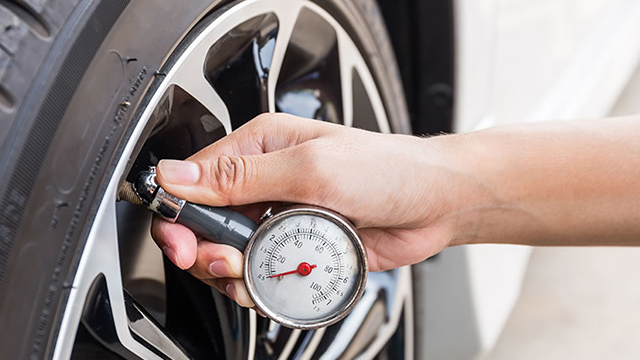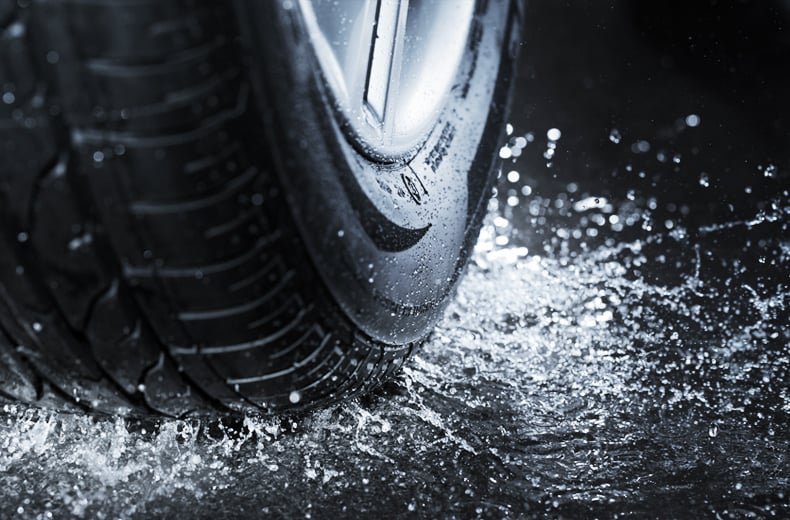

The month of October is Tyre Safety Awareness month and here at Waylands everyone’s safety is imperative to us.
Your tyres are in constant contact with the road and as such they suffer a lot of wear and tear, even if you drive carefully. This is why it’s vital that you keep an eye on the condition of your tyres.
Tyres are never manufactured with lumps, bumps or objects sticking in them, so if you see any of these, you’ll need to have the tyre inspected. Tyres should be examined frequently, removing stones or other embedded objects from the tread. If the tyre has lumps or bulges it must be examined by a tyre specialist since these could indicate internal damage. Remove oil or grease with a suitable diluted detergent. Always seek the help of a professional if you are unsure about any aspect of your tyre’s condition.


Simply place a 20p coin into the main tread grooves of your tyre. If the outer band of the 20p coin is obscured when it is inserted, then your tread is above the legal limit. If the outer band of the coin is visible, then your tyres may be illegal and unsafe and should be checked immediately by a qualified tyre professional.
When taking the test, remember to check at least three locations around each tyre. As the test is so quick and easy, stay safe by checking your tyres at least once a month.
To stay safe on the road your car needs to have the correct tyre pressure. If the tyres are under or over inflated then handling and grip will worsen, potentially causing irregular or unpredictable car behaviour.
Tyres with insufficient air are also more likely to suffer from a sudden rapid deflation and will suffer premature wear on the outside edges of the tyre.The wheel rim and tyre will be more susceptible to impact damage. Over-inflation results in less comfortable ride, a reduced area of contact with the road giving less grip in the day and accelerated wear on the tread centre . The benefits of a properly inflated tyre, include reduced running costs and longer tyre life.


The vehicle manufacturers’ handbook contains the correct pressures for your tyres, as well as it being available inside the fuel filler cap or driver’s door sill. Many tyre retailers will also be able to provide this information. Alternatively, car drivers can obtain the correct tyre pressure for their car by visiting the tyre pressure checker on TyreSafe’s website and entering their vehicle’s registration details.
Tyre treads are designed to keep the tyre in contact with the road in wet weather. Typically, the deeper the tread, the more water a tyre can clear from the road surface helping to maintain a good grip. As such, as a tyre’s tread pattern wears down or as the depth of water increases less grip is provided. Drivers should take this into consideration and reduce their speed accordingly in wet conditions. It is important to regularly check the tread depth of your car tyres to ensure that they’re well above the legal minimum. Driving with tyres below this limit is not only a safety hazard but also puts you at risk of incurring a fine of £2,500 and three penalty points per tyre. Ideally, you should check your car tyres every month.
The legal minimum tread depth for cars in the UK is 1.6mm, however, you should not risk waiting to replace them until the last minute as a significant amount of tread can be worn in just one emergency manoeuvre. It is advisable to have your tyre replaced once it reaches 2mm however most experts recommend replacing your tyres when they have a minimum of 3mm tread depth. Your car tyre tread should meet the minimum legal tread depth across three quarters of the centre of the tyre around its complete circumference.
Without adequate tread depth, your tyres may not be able to perform properly in wet conditions, reducing your safety on the road. In wet weather, tyre tread grooves help to remove water from the contact patch between your tyres and the road surface meaning your car can brake, steer and accelerate properly. Failing to have the minimum legal tread depth for a car or other vehicle puts you at a huge risk of accidents. In tests carried out by MIRA, the difference in wet braking distances for cars with 3mm of tyre tread and 1.6mm of tyre tread increased by up to 44%. It is therefore advisable to consider replacing your tyres well before they reach the legal minimum.
When driving on roads with significant standing water, vehicles can be vulnerable to ‘aquaplaning’. Aquaplaning occurs when the water cannot be removed from between the tyre and the road. This causes the vehicle to lose all contact with the road, which effectively leaves the vehicle out of control. The risk of aquaplaning increases as a tyre’s tread depth is reduced as there is an insufficient tread to clear the water properly from the road surface.
Lack of contact with the road means you are unable to accelerate or steer effectively, greatly increasing your risk of being involved in an accident. It is also unsafe to try to brake when aquaplaning as contact with the road may be regained in an unpredictable manner, causing the vehicle to spin uncontrollably. To reduce your risk of aquaplaning, check your tyre tread depth regularly.
